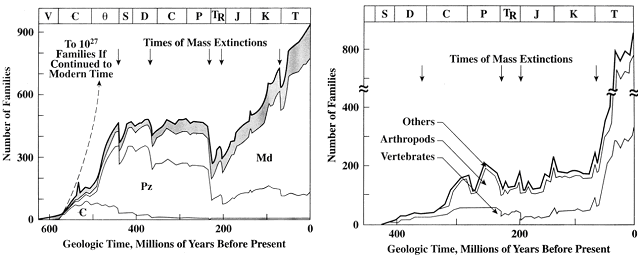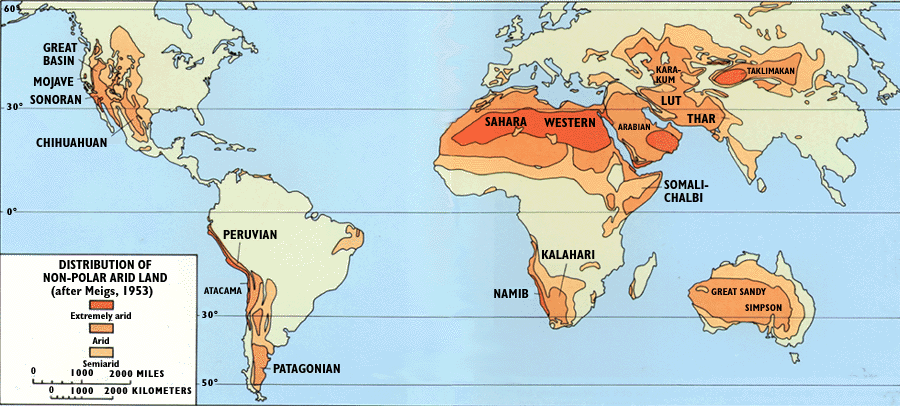⑥農産物生産量と漁業生産量:
の漁業生産量
注(*) おおまかなグループ分けであり生物分類学にいう分類群ではない。 〔国立遺伝学研究所生命情報研究センターの菅原秀明氏による生物系研究資材は戦略的情報資源であるの中の『1.はじめに‐生物多様性の世紀へ』から〕 生物の種(species)の数は、文献によりいろいろで、140万~150万種という数が報告されている場合が多いが、おそらく175万という数が既知の種数として最近のものであろう。また、未知も含めた数は、報告値の違いは非常に大きいが、ここで示された1400万種弱という数が妥当なものなのかもしれない。 |
 Figure 18.4. Number of biological families of [left] shelly marine fauna and [right] nonmarine animals over time. Dashed line extrapolates to later times the increse in number of families in the early Cambrian in the absence of extinctions. Arrows show times of mass extinctions. On the nonmarine graph, vertebrates and arthropods are broken out as well. Note that animals did not appear in nonmarine sediments, and hence were not on land, until almost 200 million years after the start of the Phanerozoic. The top portion of the graph labels the geologic periods using traditional symbols. From Milne et al. (1985). 〔University of WyomingのPaul Heller氏による『GEOLOGY 1200: Historical Geology』の中の『Lecture 11: ORIGIN OF LIFE』から〕 約6億年前から現在までの海に棲む殻をもつ動物『科』数(左側)と陸に棲む動物『科』数(右側)。 |
 〔NASA earth observatoryの『News』の『New Images』の中の『NASA Satellites Measure Earth’s Metabolism』から〕 一次生産。 |
|
This global map was assembled from the regional data used throughout this study. However, the forest type classification has been simplified for easier interpretation and the sparser forests were eliminated from the coverage.  〔UNEP-WCMCによる『Forests』の中の『Forest Information Service』の『A Global Overview of Forest Conservation』の『Global Overview』の『Global forests map』から〕 森林の分布。 |
 〔USGSによるDeserts: Geology and Resourcesの『What Is a Desert?』から〕 乾燥地域の分布。ほぼ砂漠地域に相当する。 |